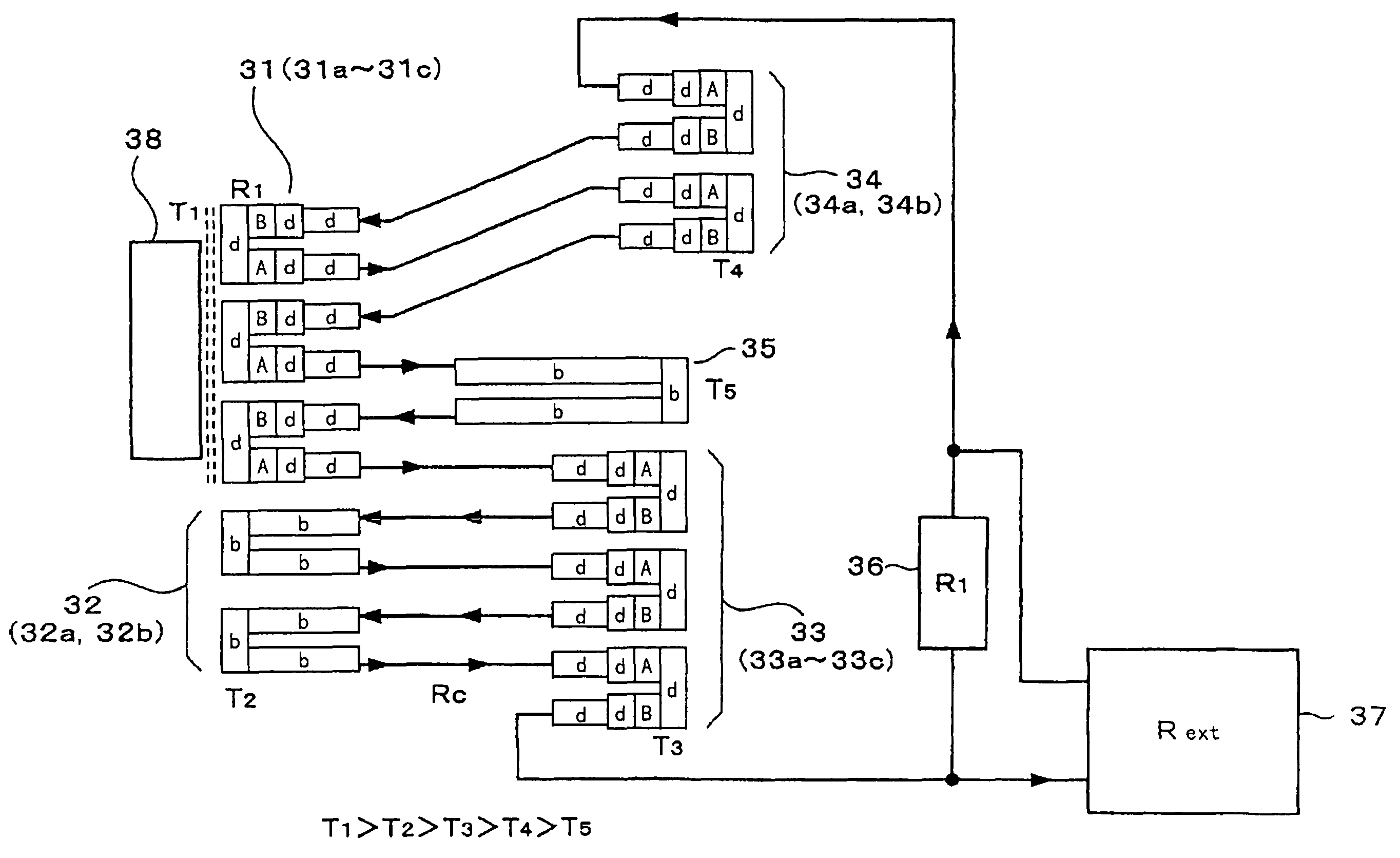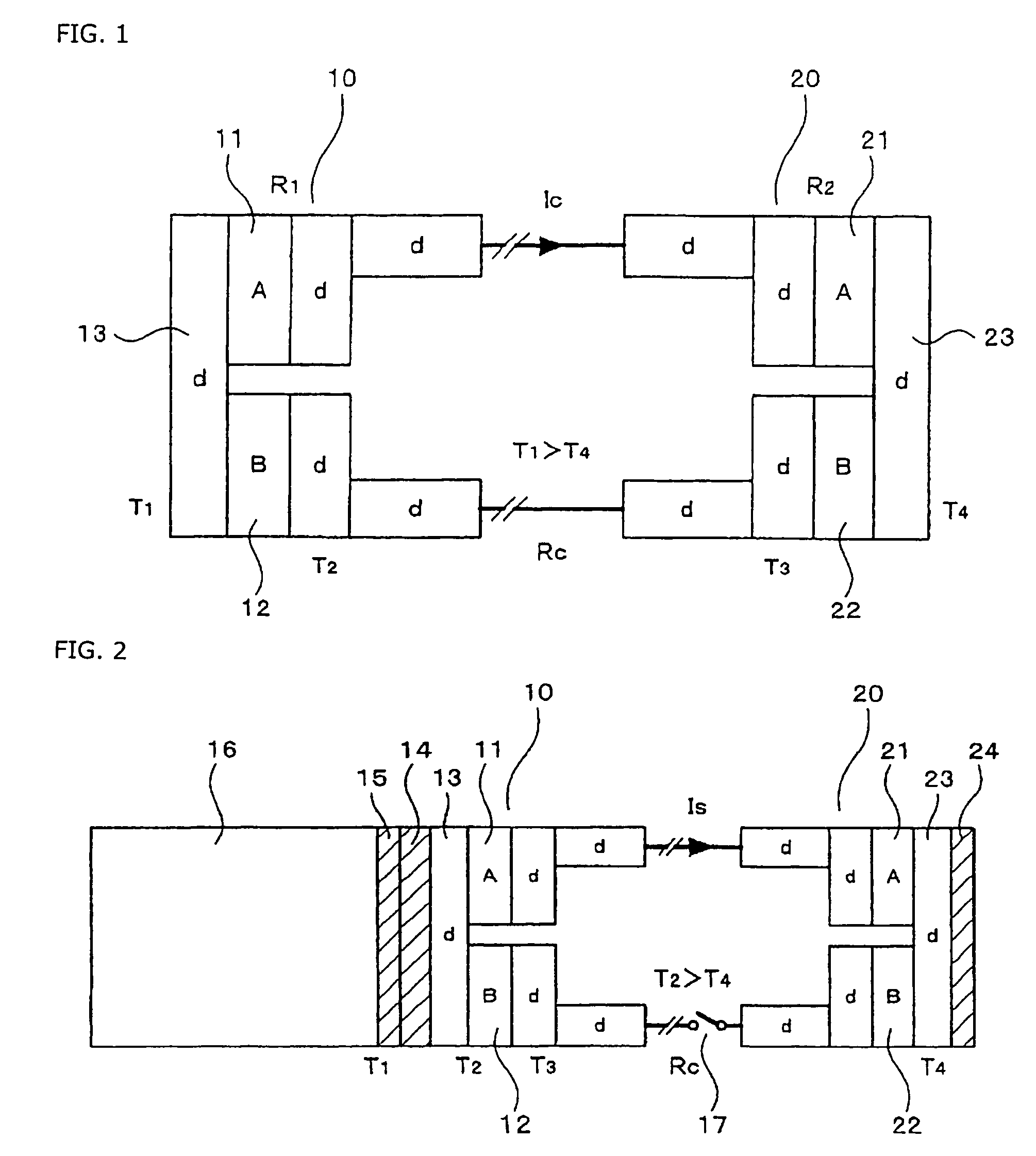Thermal energy transfer circuit system
a technology of thermal energy transfer circuit and thermal energy, which is applied in the direction of thermoelectric devices with peltier/seeback effect, basic electric elements, electric apparatus, etc., can solve the problems of increasing energy consumption, increasing energy consumption, and the technique of actively generated thermal energy recycling without additional use of thermal or electric energy is not yet completed, so as to save energy and reduce noise. the effect of
- Summary
- Abstract
- Description
- Claims
- Application Information
AI Technical Summary
Benefits of technology
Problems solved by technology
Method used
Image
Examples
second embodiment
[0064]Next, the present invention is described with reference to FIG. 4. FIG. 4 is a schematic diagram showing a system for utilizing a thermal energy resource, converting it into electric energy, and supplying it to an external load circuit 37, i.e. a thermal energy resource to electric energy resource conversion and supply system.
[0065]As shown in FIG. 4, in the thermal energy resource to electric energy resource conversion and supply system, one or more thermoelectric conversion elements or conductive coupling members are disposed in five different temperature environments. Thermal energy of an external temperature T1 is supplied from an external heat source 38 that exists in the natural world or made artificially, to a joining member d that joins together a first conductive member A and a second conductive member B of each of thermoelectric conversion elements 31a to 31c constituting a first thermoelectric conversion element group 31. Thus, the first thermoelectric conversion el...
first embodiment
[0078]The application shown in FIG. 6 differs from the first embodiment shown in FIG. 4 in that the water electrolyzer 39 is provided in the position where the conductive coupling member 35 is disposed in FIG. 4.
[0079]In the conversion to chemical energy resource and storage system of FIG. 6, the first conductive member A of the thermoelectric conversion element 34a is connected to a hydrogen-generating electrode 39a of the water electrolyzer 39, while the second conductive member B of the thermoelectric conversion element 33c is connected to an oxygen-generating electrode 39b of the water electrolyzer.
[0080]The thermoelectric conversion elements 34a and 34b are cascaded with the thermoelectric conversion elements 31a and 31b, as in the example of FIG. 4. The first conductive member A of the thermoelectric conversion element 31b is connected to the oxygen-generating electrode 39b of the water electrolyzer 39 as described above. The hydrogen-generating electrode 39a of the water elec...
PUM
 Login to View More
Login to View More Abstract
Description
Claims
Application Information
 Login to View More
Login to View More - R&D
- Intellectual Property
- Life Sciences
- Materials
- Tech Scout
- Unparalleled Data Quality
- Higher Quality Content
- 60% Fewer Hallucinations
Browse by: Latest US Patents, China's latest patents, Technical Efficacy Thesaurus, Application Domain, Technology Topic, Popular Technical Reports.
© 2025 PatSnap. All rights reserved.Legal|Privacy policy|Modern Slavery Act Transparency Statement|Sitemap|About US| Contact US: help@patsnap.com



